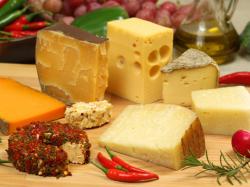Specialty Food Industry Shows Renewed Strength
April 12, 2011 | 3 min to read

New York, NY – Consumers are spending on specialty food again after a period of holding back. Sales of specialty food and beverages rose 7.7 percent in 2010, topping $70 billion, according to new research released by the National Association for the Specialty Food Trade.
"The rebound is impressive," says Ron Tanner, Vice President, Communications and Education for the NASFT. "As consumers feel more confident about the economy, they are coming back to specialty foods." In 2009, sales rose by a more tepid 4.5 percent.
Cheese continues to dominate spending for this segment of the food industry, with $3.23 billion in sales in 2010. Rounding out the top five categories are meats, chips and snacks, bread and baked goods and condiments. Functional beverages are the fastest growing specialty food category, followed by yogurt and kefir.
Last year specialty food makers focused on their existing items, with new product introductions about even with 2009. Launches of premium private-label products, such as store brand cookies and sauces, declined to 455 in 2010 from 518 in 2009, demonstrating a return to branded products.
These findings are presented in The State of the Specialty Food Industry 2011, an annual report from the NASFT prepared in conjunction with market researchers Mintel International and SPINS. The report tracks sales of specialty food through supermarkets, natural food stores and specialty food retailers, and includes research from interviews with food retailers, distributors, brokers and others involved in the supply chain.
The report predicts product claims that will drive sales in the future. Eco-friendly, Fair Trade and sustainable are expected to edge out the current buzzwords all-natural, organic and local.
Here are some highlights from the report:
Total U.S. sales of specialty foods in 2010 were $70.32 billion, with $14.4 billion represented by sales to the foodservice industry.
Specialty foods represent 13.1 percent of all food sales at retail.
Natural food stores are the fastest growing retail channel; sales rose 14.7 percent between 2008 and 2010.
Mediterranean and Indian are the most influential emerging cuisines, importers say.
Seventy-six percent of specialty food manufacturers reported a sales increase in 2010, with 36 percent up more than 20 percent.
Gluten-free introductions showed sharp gains, with 119 new products in 2010 versus 67 in 2009.
Supermarkets remain the largest seller of specialty foods, with 72.3 percent of sales, but their share is dipping as specialty and natural food stores attract more consumers.
The average specialty food manufacturer produces 51 different items and brings in $2.3 million in annual sales.
The Fancy Food Shows, customer recommendations and trade magazines are the most important sources for discovering new products, retailers reported.
A summary of The State of the Specialty Food Industry 2011 research was published in the April 2011 issue of Specialty Food Magazine. On Wednesday, April 13, from 2 – 3 p.m. ET, the NASFT's webinars@work series will present a session on the findings. For more information, go to http://eo2.commpartners.com/users/nasft/index.php
About the NASFT The NASFT is a not-for-profit trade association established in 1952 to foster trade, commerce and interest in the specialty food industry. Today there are more than 2,900 members in the U.S. and abroad. The NASFT's website for consumers, foodspring.com, provides an insider's look at specialty foods and the companies, entrepreneurs and artisans behind them. For information on the NASFT, go to http://www.foodspring.com/about/nasft. For information on the NASFT's Fancy Food Shows, go to http://www.foodspring.com/about/fancy-food.
Source: National Association of Specialty Food Trade, Inc.
